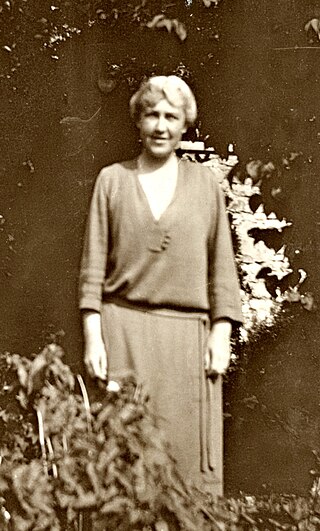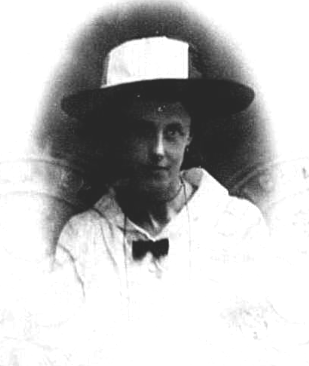Related Research Articles

Esther Boise Van Deman was a leading archaeologist of the late 19th and early 20th centuries. She developed techniques that allowed her to estimate the building dates of ancient buildings in Rome.

Lida Shaw King was an American classical scholar and college dean.
Joyce Marcus is a Latin American archaeologist and professor in the Department of Anthropology, College of Literature, Science, and the Arts at the University of Michigan, Ann Arbor. She also holds the position of Curator of Latin American Archaeology, University of Michigan Museum of Anthropological Archaeology. Marcus has published extensively in the field of Latin American archaeological research. Her focus has been primarily on the Zapotec, Maya, and coastal Andean civilizations of Central and South America. Much of her fieldwork has been concentrated in the Valley of Oaxaca, Mexico. She is known for her "Dynamic model", four-tiered hierarchy, and her use of interdisciplinary study.

Mary Chase Perry Stratton was an American ceramic artist. She was a co-founder, along with Horace James Caulkins, of Pewabic Pottery, a form of ceramic art used to make architectural tiles.
Theresa Bathsheba Goell was an American archaeologist, best known for directing excavations at Nemrud Dagh in south-eastern Turkey. Born in New York, she earned a BA at Radcliffe College, then graduated from Newnham College, Cambridge, and later studied at New York and Columbia Universities in New York.

Henry Van Ingen was a Dutch painter who for many years taught art at Vassar College in the United States.

Clark Hopkins was an American archaeologist. During the 1930s he led the joint French-American excavations at Dura Europos. In later years he was professor of art and archeology at the University of Michigan.

The Kelsey Museum of Archaeology is a museum of archaeology located on the University of Michigan central campus in Ann Arbor, Michigan, in the United States. The museum is a unit of the University of Michigan's College of Literature, Science, and the Arts. It has a collection of more than 100,000 ancient and medieval artifacts from the civilizations of the Mediterranean and the Near East. In addition to displaying its permanent and special exhibitions, the museum sponsors research and fieldwork and conducts educational programs for the public and for schoolchildren. The museum also houses the University of Michigan Interdepartmental Program in Classical Art and Archaeology.

Parthian art was Iranian art made during the Parthian Empire from 247 BC to 224 AD, based in the Near East. It has a mixture of Persian and Hellenistic influences. For some time after the period of the Parthian Empire, art in its styles continued for some time. A typical feature of Parthian art is the frontality of the people shown. Even in narrative representations, the actors do not look at the object of their action, but at the viewer. These are features that anticipate the art of medieval Europe and Byzantium.

Grace Harriet Macurdy was an American classicist, and the first American woman to gain a PhD from Columbia University. She taught at Vassar College for 44 years, despite a lengthy conflict with Abby Leach, her first employer.

Inez Gertrude Scott Ryberg was an American classical archaeologist and academic, who specialized in archaeology, Roman art and architecture.

Elizabeth Denny Pierce Blegen was an American archaeologist, educator and writer. She excavated at sites in Greece and Cyprus, contributed reports on archaeological discoveries in Greece to the American Journal of Archaeology from 1925 to 1952, and was involved in several organisations promoting women's professional advancement in Greece and the United States.

Ida Carleton Hill was an American archaeologist, classical scholar and historian. Hill had a strong interest in the relationship between history, geography, and archaeology, which was reflected in her research and publications over her fifty-year career.
Cleo Rickman Fitch was an American archaeological researcher who specialized in Roman lamps.
Elinor Mullett Husselman was an American Coptic scholar and papyrologist. She was Curator of Manuscripts and Papyrology at the University of Michigan Library and Curator of the Kelsey Museum of Archaeology for forty years, from 1925 to 1965.

Anna Marguerite McCann was an American art historian and archaeologist. She is known for being an early influencer—and the first American woman—in the field of underwater archaeology, beginning in the 1960s. McCann authored works pertaining to Roman art and Classical archaeology, and taught both art history and archaeology at various universities in the United States. McCann was an active member of the Archaeological Institute of America, and received its Gold Medal Award in 1998. She also published under the name Anna McCann Taggart.
Leila Clement Spaulding (1878-1973) was an American classicist and archaeologist who taught Greek at Vassar College (1903-1907), lectured in art and archaeology at Bryn Mawr College and was Assistant Professor of Classics at Colorado College 1911–1914. She was the first woman professor with a PhD at Colorado College. As well as her teaching responsibilities, Spaulding worked on classical sculpture publishing the book of her PhD thesis on the "Camillus"-Type in sculpture.
Judith Barringer is an American classical archaeologist and Professor of Greek Art and Archaeology at the University of Edinburgh. She studies the archaeology, art and culture of ancient Greece from the Archaic to Hellenistic periods.
Lea Margaret Stirling is a Canadian classical scholar and professor in the Department of Classics at the University of Manitoba. Her research focuses on Roman archaeology and Roman art with particular emphases on Roman sculpture, Late Antique art, and cemetery archaeology, and Roman North Africa.

Elizabeth Douglas Van Buren was a British Classical and Near-eastern archaeologist.
References
- 1 2 3 4 "A Guide to the Wilhelmina Van Ingen Elarth Papers, 1862-1971 Elarth, Wilhelmina Van Ingen Papers Ms1969-004". ead.lib.virginia.edu. Retrieved 2020-05-01.
- ↑ Robinson, David M. (1929). "A Preliminary Report on the Excavations at Olynthos". American Journal of Archaeology. 33 (1): 53–76. doi:10.2307/497648. ISSN 0002-9114. JSTOR 497648. S2CID 193121038.
- ↑ Dessy, Raymond. "Exile From Olynthus" (PDF).
- ↑ "Herschel Elarth". Winnipeg Architecture Foundation. Retrieved 2020-05-03.
- ↑ "Swans and Circles: An Object Biography of an Unprovenanced Geometric Pyxis" (PDF). Philomathes.
- ↑ Elarth, Wilhelmina Van Ingen (1939). Figurines from Seleucia on the Tigris: discovered by the expeditions conducted by the University of Michigan with the cooperation of the Toledo museum of art and the Cleveland museum of art, 1927-1932. University of Michigan studies. Humanistic series ;v. 45. Ann Arbor: The University of Michigan press.
- ↑ Duguay, Louise (2015-11-06). Pauline Boutal: An Artist's Destiny, 1894-1992. Univ. of Manitoba Press. ISBN 978-0-88755-481-0.